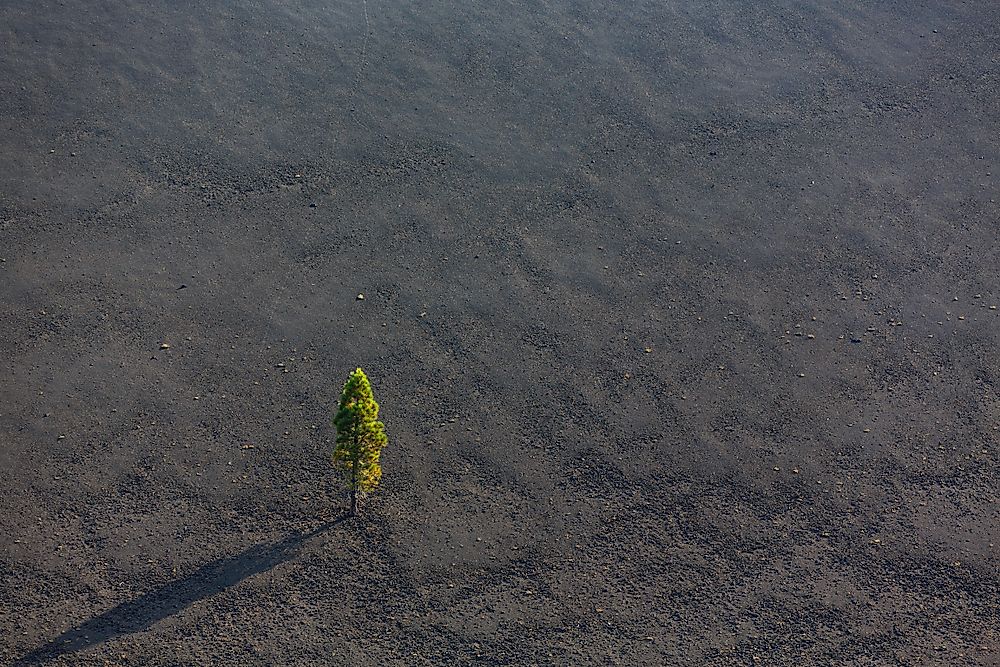What is Volcanic Ash?

Volcanic ash is made up of fragments of volcanic glasses, minerals, and pulverized rocks, with a diameter of about 0.079 inches, which were formed during a volcanic eruption. The term volcanic ash is often loosely used to refer to tephra (all the products of a volcanic eruption including all the particles with a diameter of over 0.079 inches). They are created during an explosive eruption when the dissolved gas expands and escapes into the atmosphere. The force shatters the magma and forces it into the air where it solidifies and turns into volcanic rock and glass fragments.
How Is Volcanic Ash Formed?
The explosive volcanic eruption occurs when magma is decompressed as it is rising, thus allowing dissolved volatile compounds (mostly carbon dioxide and water) to exsolve to gas bubbles. As more gas bubbles undergo the nucleation process, a form is created, and this decreases magma’s density and forces it up into the atmosphere. Fragmentation takes place when the bubbles occupy about 80vol% of the erupted magma. While fragmenting, violently expanding gas bubbles break the erupted mixture into minute fragments which are released into the air where they solidify and form volcanic ash.
Volcanic ash can also be created by the Pyroclastic density currents which are produced when a lava dome collapses. Particles abrasion occurs when they interact with each other within these currents and this results in the formation of some fine-grained volcanic ash particles. It can also be formed during the secondary fragmentation process of the pumice because of heat conservation within these flows.
Volcanic ash can also be formed during a phreatomagmatic eruption process. During this process, fragmentation takes place when magma mixes with ice or water. As they combine an insulation vapor film is formed, and the collapse of this film results in direct coupling of hot magma and cold water. The increase in heat transfer causes expansion of water and breaking of magma into minute particles which are released through the volcanic vent. The fragmentation process increases the contact area between water and magma which creates a feedback mechanism that produces more fine ash particles.
What Are the Physical Properties of Volcanic Ash?
The volcanic ash formed during a volcanic eruption have various fractions of lithic (non-magnetic), crystalline or vitric (non-crystalline) particles. The ones created during low-viscosity magma eruption (strombolian and Hawaiian basaltic eruption) form a wide range of pyroclasts depending on the eruption process. Ash from the Hawaiian fountain has light brown basaltic pyroclasts with phenocrysts and microlites. Particles formed during phreatic eruptions have hydrothermally changed mineral and lithic fragment in a clay matrix.
Volcanic ash has pyroclasts with a diameter of less than 0.079 inches. The general grain size of volcanic ash varies depending on the composition of the magma. Rhyolitic magmas form finer grained particles due to their high viscosity. The proportion of fine particles is high in sicilic volcanic eruptions since its vesicle size is smaller than the matic magmas.
The Effects of Volcanic Ash on the Atmosphere
Volcanic ash can spread over a broad region in the sky and turn daylight into darkness thus affecting visibility. Airborne ash is quite dangerous to aircraft. Lightning and thunder sometimes accompany the enormous clouds formed by volcanic ash. They can reach the stratosphere and reflect solar radiation while absorbing land radiation and this will result in lowering of the earth’s temperature. In severe cases, the volcanic winters affect the earth’s weather patterns.











